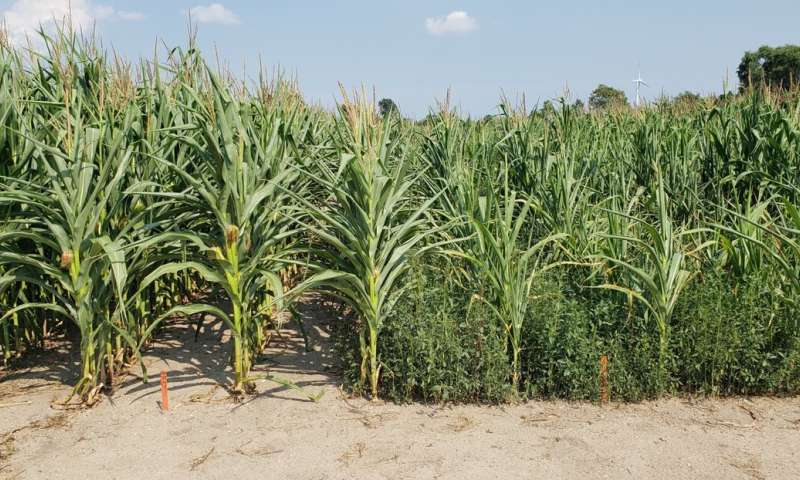Best of Last Week—Turning a common plant into a weed, tapping water vapor over oceans, mapping sixth sense genes

It was an interesting week for planetary and Earth science as an international team of researchers discovered that intensive agricultural practices in North America over the past century have turned a wild plant into a pervasive weed. They found that the common waterhemp's unique genetic makeup made it particularly troublesome for farmers. Also, a trio of researchers, two with the University of Chicago, the third with the University of Washington, discovered why the Southern Hemisphere is stormier than the Northern. Tiffany Shaw, Osamu Miyawaki and Aaron Donohoe found that it is due to ocean circulation and the large mountain ranges in the Northern Hemisphere. And a team with members affiliated with multiple institutions in the U.S. and one in Australia found that there is more magma below the Yellowstone Caldera than previously thought—almost twice as much.
In technology news, a team at MIT developed a paper-thin solar cell that can turn virtually any surface into a power source—the ultralight fabric cells are both flexible and durable. And a team at Worcester Polytechnic Institute debuted a transformable rolling robot called OmniWheg—the four-wheeled robot can convert its wheels to omnidirectional wheel legs, allowing it to crawl over less smooth terrain. Also, a team at the University of Illinois Urbana-Champaign, proposed new structures to harvest an untapped source of freshwater hovering as vapor over the Earth's oceans. And a pair of researchers, one with Gymnasium of Johannes Kepler, the other with the University of California, Berkley, developed an AI application capable of determining whether a video clip of a famous person is genuine or a deepfake based on unique body movements.
In other news, a team at The Tisch Cancer Institute at the Icahn School of Medicine at Mount Sinai developed a therapy that induces the immune system to kill bone marrow cancer cells. It was found to be effective in 73% of patients in two clinical trials. Also, a team with members affiliated with multiple institutions in the U.S. and the U.K. discovered that a high-entropy chromium-cobalt-nickel alloy is the toughest material on Earth. And finally, a team of researchers at the Max-Delbrück-Center for Molecular Medicine in Germany, working with a colleague from China, described genes associated with proprioception—the sense that allows people to do things like walk in the dark or drink from a coffee mug with their eyes closed.
© 2022 Science X Network